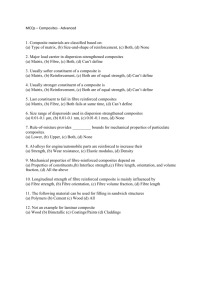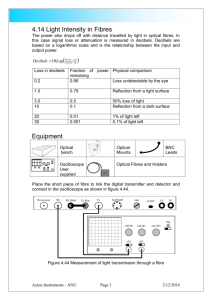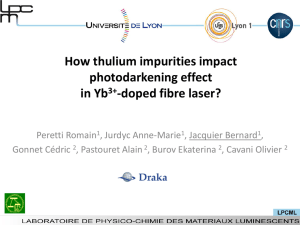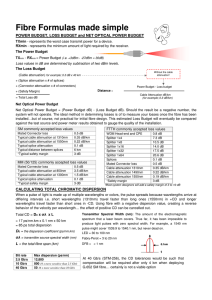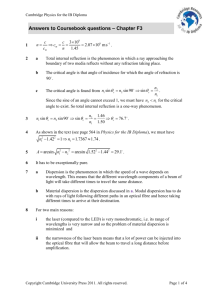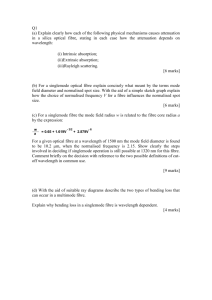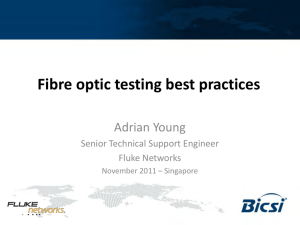Fibre-Basics
advertisement
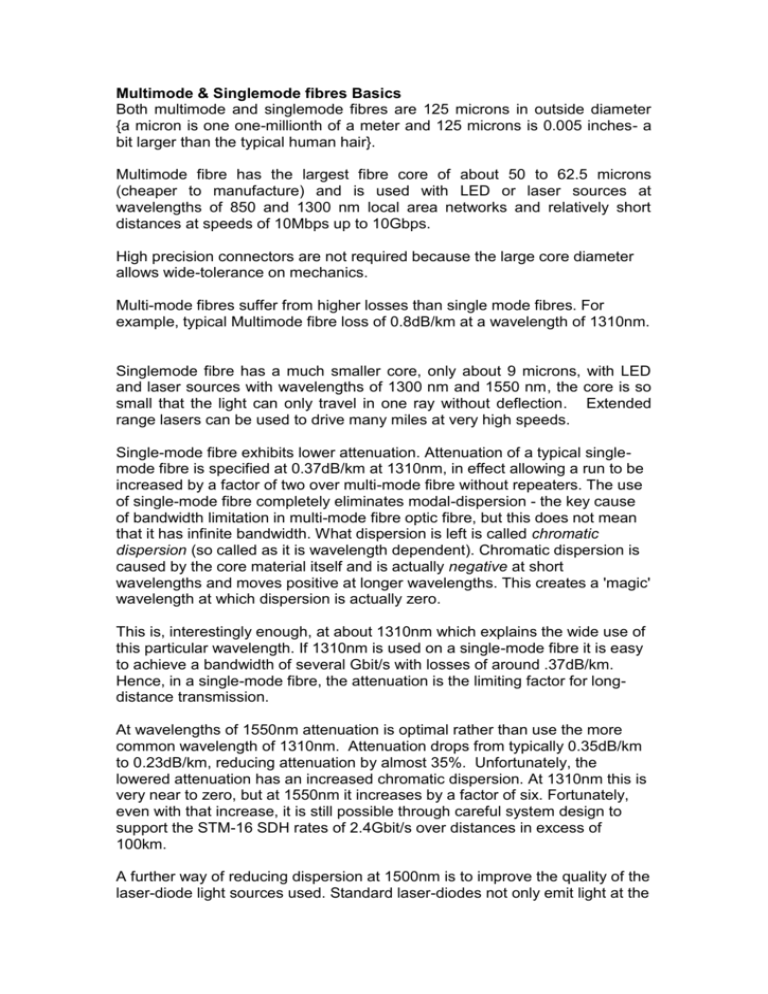
Multimode & Singlemode fibres Basics
Both multimode and singlemode fibres are 125 microns in outside diameter
{a micron is one one-millionth of a meter and 125 microns is 0.005 inches- a
bit larger than the typical human hair}.
Multimode fibre has the largest fibre core of about 50 to 62.5 microns
(cheaper to manufacture) and is used with LED or laser sources at
wavelengths of 850 and 1300 nm local area networks and relatively short
distances at speeds of 10Mbps up to 10Gbps.
High precision connectors are not required because the large core diameter
allows wide-tolerance on mechanics.
Multi-mode fibres suffer from higher losses than single mode fibres. For
example, typical Multimode fibre loss of 0.8dB/km at a wavelength of 1310nm.
Singlemode fibre has a much smaller core, only about 9 microns, with LED
and laser sources with wavelengths of 1300 nm and 1550 nm, the core is so
small that the light can only travel in one ray without deflection. Extended
range lasers can be used to drive many miles at very high speeds.
Single-mode fibre exhibits lower attenuation. Attenuation of a typical singlemode fibre is specified at 0.37dB/km at 1310nm, in effect allowing a run to be
increased by a factor of two over multi-mode fibre without repeaters. The use
of single-mode fibre completely eliminates modal-dispersion - the key cause
of bandwidth limitation in multi-mode fibre optic fibre, but this does not mean
that it has infinite bandwidth. What dispersion is left is called chromatic
dispersion (so called as it is wavelength dependent). Chromatic dispersion is
caused by the core material itself and is actually negative at short
wavelengths and moves positive at longer wavelengths. This creates a 'magic'
wavelength at which dispersion is actually zero.
This is, interestingly enough, at about 1310nm which explains the wide use of
this particular wavelength. If 1310nm is used on a single-mode fibre it is easy
to achieve a bandwidth of several Gbit/s with losses of around .37dB/km.
Hence, in a single-mode fibre, the attenuation is the limiting factor for longdistance transmission.
At wavelengths of 1550nm attenuation is optimal rather than use the more
common wavelength of 1310nm. Attenuation drops from typically 0.35dB/km
to 0.23dB/km, reducing attenuation by almost 35%. Unfortunately, the
lowered attenuation has an increased chromatic dispersion. At 1310nm this is
very near to zero, but at 1550nm it increases by a factor of six. Fortunately,
even with that increase, it is still possible through careful system design to
support the STM-16 SDH rates of 2.4Gbit/s over distances in excess of
100km.
A further way of reducing dispersion at 1500nm is to improve the quality of the
laser-diode light sources used. Standard laser-diodes not only emit light at the
primary or dominant wavelength but they also emit other wavelengths at the
same time. These are close to the dominant wavelength but are at lower
power levels. These sidelobes cause dispersion of digital signals being
transmitted through a fibre optic fibre..
1000BASE- 1000-Mbps gigabit Ethernet specification using two strands of multimode or
LX/LH
single mode fiber-optic cable per link. To guarantee proper signal recovery, a
1000BASE-LX/LH link cannot exceed 1804 feet (550 meters) in length over
multimode fiber or 32,810 feet (10 km) in length over single mode fiber.
Based on the IEEE 802.3 standard with reach over single mode fiber
extended from 5 km to 10 km. IEEE 802.3 LX range = 5km
1000BASE- 1000-Mbps gigabit Ethernet specification using two strands of multimode
SX
fiber-optic cable per link. To guarantee proper signal recovery, a 1000BASESX link cannot exceed 1804 feet (550 meters) in length. The 1000BASE-SX
specification is based on the IEEE 802.3 SX standard.
1000BASE- 1000-Mbps gigabit Ethernet specification that refers to the 1000BASE-CX,
X
1000BASE-SX, and 1000BASE-LX standards for gigabit Ethernet over fiberoptic cabling. The 1000BASE-X specification is based on the IEEE 802.3
generic standard.
1000BASE- 1000-Mbps gigabit Ethernet specification using two strands of single mode
ZX
fiber-optic cable per link. To guarantee proper signal recovery, a 1000BASEZX link cannot be longer than 62.1 mi (100 km). This is a Cisco
specification.



